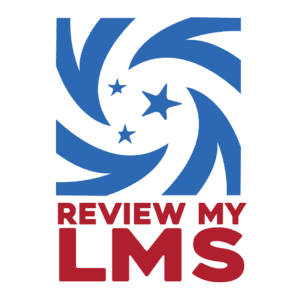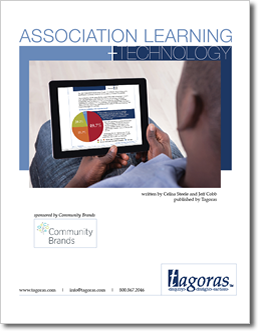For anyone in the learning business who is looking at how to effectively grow and improve their offerings, it’s important to be tuned into the trends that are currently impacting the market.
In this episode of the Leading Learning podcast, Celisa and Jeff discuss four major themes, or what they refer to as the 4 “Cs,” of the current learning business landscape: concision, context, competency, and community.
To tune in, just click below. To make sure you catch all of the future episodes, be sure to subscribe by RSS or on iTunes. And, if you like the podcast, be sure to give it a tweet!
Listen to the Show
Read the Show Notes
[00:18] – A preview of what will be covered in this podcast where Celisa and Jeff discuss the four major themes – the 4 “Cs” – of the current learning landscape.

[00:34] – Our sponsor this quarter is ReviewMyLMS, a collaboration between our company, Tagoras, and 100Reviews, the company that is behind the very successful ReviewMyAMS site. As the name suggests, ReviewMyLMS is a site where users can share and access reviews of learning management systems, but in this case, the focus is specifically on systems that are a good fit for learning businesses, meaning organizations that market and sell lifelong learning. Contribute a review and you will get access to all existing and future reviews—there are already more than 100 on the site. And, if you don’t have review to contribute, there is also a subscription option. Just go to reviewmylms.com to get all the details.
[01:24] – Highlighted Resource of the Week – the recording of our 2017 Learning Trends, 2018 Learning Forecast Webinar (and slides to go with it).This is the most recent of our annual trends and predictions Webinars, and the trends and predictions highlighted are definitely still relevant and even still unfolding.
The 4 Cs
[01:51] – Jeff and Celisa share how they decided on the topic for this episode, which came from preparing for a presentation about trends to be tuned into. With the aim of making these trends as easy to remember as possible, they’ve boiled those core parts down into four terms that each start with the letter “C.”
Concision
[02:52] –A standard dictionary definition of concision focuses on the use of words – and specifically, minimizing words, but our slightly modified definition, as applied to the learning landscape is that concision means
: minimizing time and effort, while conveying an idea. It aims to enhance communication by eliminating redundancy without omitting important information.
In the world of learning, we see this concept of concision as very tightly aligned with another concept we’ve discussed before: the minimum effective dose.
You don’t want to take too much medicine to treat an illness – more often, that doesn’t increase effectiveness and can easily end up being harmful.
In the same way, it’s increasingly important that we to strive to offer learning experiences that are designed to get the job done and not overburden the learner, or potentially even interfere with learning by including extraneous content that can detract from what’s truly important.
We see learning experiences that adhere to concision as needing to be:
- Lean –no extraneous content
- Accessible – to the greatest extent possible minimizing barriers like travel or having to wait until a specific day or time to participate in the learning experience
- Focused – geared toward addressing a very specific issue or opportunity
- Effective – designed to leverage learning practices that help learning stick and have real impact
It’s almost certain that Leading Learning listeners have been feeling the impact of concision. It is a big driver of the whole “micro” craze: microlearning, microcredentialing, nanodegrees.
Below are links to earlier episodes where we have discussed some these trends:
- Microcredentials and Mentoring with Veronica Diaz
- The Promise of Digital Badges and Microcredentialing with Jennifer Kabaker of Digital Promise
- Talking 10-Minute CPE and Talent with Josh Goldman
Concision is also a big driver of the video craze – we expect to see interactive video start to play a bigger role to help turn brief video into much more effective learning experiences.
Context
[06:33] – We have talked about the importance of context in various ways over time, but have been recently inspired by Mike Wittenstain saying, “Context is up for grabs.” It’s why framing, providing context is so critical.
This whole focus on context is a big driver behind one of the other key trends we hear so much about these days – personalization of the experience for the learner.
There are a couple of related practices and trends that go along with this focus on context:
- Curation – if you’re going to personalize an experience for a learner and provide that context, as a learning business you have to get good at curation. When you put together pieces of art, you’re really bringing out more meaning, value, and helping to connect the dots. And we increasingly need to be doing this with how we’re pulling together the different types of learning content and experiences that we can provide for our learners.
See our earlier episode on the topic of curation, Capitalizing on Curation.
[09:38] –
- Artificial intelligence – increasingly we are going to be looking to big data from out in the world and the small data from what learners are actually doing. Connecting the big and small data through algorithms is essentially artificial intelligenceand using that to see what learners need will help personalize and provide context.
It may sound futuristic to be talking about AI—in our recent interview with Bernard Bull, he talked about how it’s hard to say exactly when all of this will kick in—it may be 25 years out or 2 years out. However, it’s already going mainstream in so many ways and it’s getting much easier to do things with AI.
Check out Watson Studio, IBM’s AI engine available for free (Amazon and Google also have similar offerings).
See our related episode, Learning in the Digital Age with Brandon Carson.
Competency
[12:25] – We have seen a lot of new activity in the area of competency.
Below are potential reasons why there’s been such a focus on competency:
- The world has changed and with it, the nature of work.
We’ve written about and discussed this in many other places, including in our recent episode with futurist Heather McGowan .The basic idea is that with jobs changing rapidly, with people changing jobs and even careers much more often, with people living and working longer, there is a rapidly growing need to acquire new competencies.
- Competency solves two sides of the same problem:
- Employers need to be able to better verify that they can get workers who are truly competent to fill emerging roles.
- Workers need to be able to add and update skills – and prove to employers that they have the required skills.
- Competency satisfies our desire for clarity.
People want to see that there is a well-defined, logical progression that they can pursue through a career by achieving the appropriate competencies. This ties into career pathing – we discussed this in our trends Webinar, which is the resources for this episode.
- We’ve seen new, and arguably, better ways emerge to measure and validate competency.
So things like badges and other alternative credentialing. These are naturally leading to new opportunities for learners and learning businesses and contributing to the amount of attention that competency is receiving.
Community
[15:18] – We’ve talked about community for a while and done a lot of work and research in the area of social learning—see our Social Learning Trends in the Association Space white paper.
It seems that community is reaching a tipping point in terms of the role that it’s going to play for learning businesses going forward. And there’s data to back that up from our Association Learning + Technology Report.
In the data collected for the 2016 report, 21.7 percent of respondents currently using technology for learning said they had a learning community platform, and 20.2 percent reported plans for using such a platform in the following 12 months.
Those plans have played out; in the current survey (end of 2017), 37.4 percent said they do use a private online community platform, and 14.7 percent plan to use one in the year ahead.
More and more, these are being integrated into other tools like learning managements systems—a lot of the LMS providers now have standard integrations into platforms like Higher Logic, which have such a big footprint in the community world.
We’re starting to see signs that organizations are going to get more thoughtful about how they use communities. The shear volume of organizations that now have community platforms in place are a sign this is going to be the next “Webinars”—almost all organizations are offering them.
We’re also seeing more interesting use of how these communities play out. We ourselves made a lot of use of community in the context of Learning • Technology • Design™ (LTD). Organizations are also making much more use of video as elements of community now—the Institute for Management Consulting does video chats using Zoom every week to pull the community together.
Also, the Association for Research in Vision and Ophthalmology (ARVO) put together a great community around a leadership initiative and they’re incorporating into that, elements of microlearning—so they have social learning objects and concision.
They also have a mentoring component coming into all that and we think associating mentoring with community is going to be a powerful thing going forward.
We’ve also seen EDUCAUSE blending mentoring and community in their programs as well.
All in all, the ability to do community now because of what technology provides for and the fact it’s being put into place in the vast majority of organizations, now means we need to be more thoughtful about it and how it can be a glue to pull together some of the other Cs we’ve mentioned.
The power of community is tremendous and it’s something every learning business needs to be focused on.
[19:52] – Wrap Up
We’d love to hear about anything you’re thinking or doing in any of these 4 C areas, so feel free to comment and share your thoughts below.
If you are getting value from the Leading Learning podcast, be sure to subscribe by RSS or on iTunes. We’d also appreciate if you give us a rating on iTunes by going to https://www.leadinglearning.com/itunes.
And we’d be grateful if you would take a minute to visit our sponsor for this quarter, ReviewMyLMS and, if you can, contribute a review to help others find the right platform for their needs.
Also, consider telling others about the podcast. Go to https://www.leadinglearning.com/share to share information about the podcast via Twitter, or send out a message on another channel of your choosing with a link to https://www.leadinglearning.com/podcast.
[22:33] – Sign off
See Also:
- 12 Trends (Still) Disrupting the Market for Lifelong Learning and Continuing Education
- Capitalizing on Curation
- Learning in the Digital Age with Brandon Carson
- Microcredentials and Mentoring with Veronica Diaz
- The Promise of Digital Badges and Microcredentialing with Jennifer Kabaker of Digital Promise
- Talking 10-Minute CPE and Talent with Josh Goldman



Leave a Reply